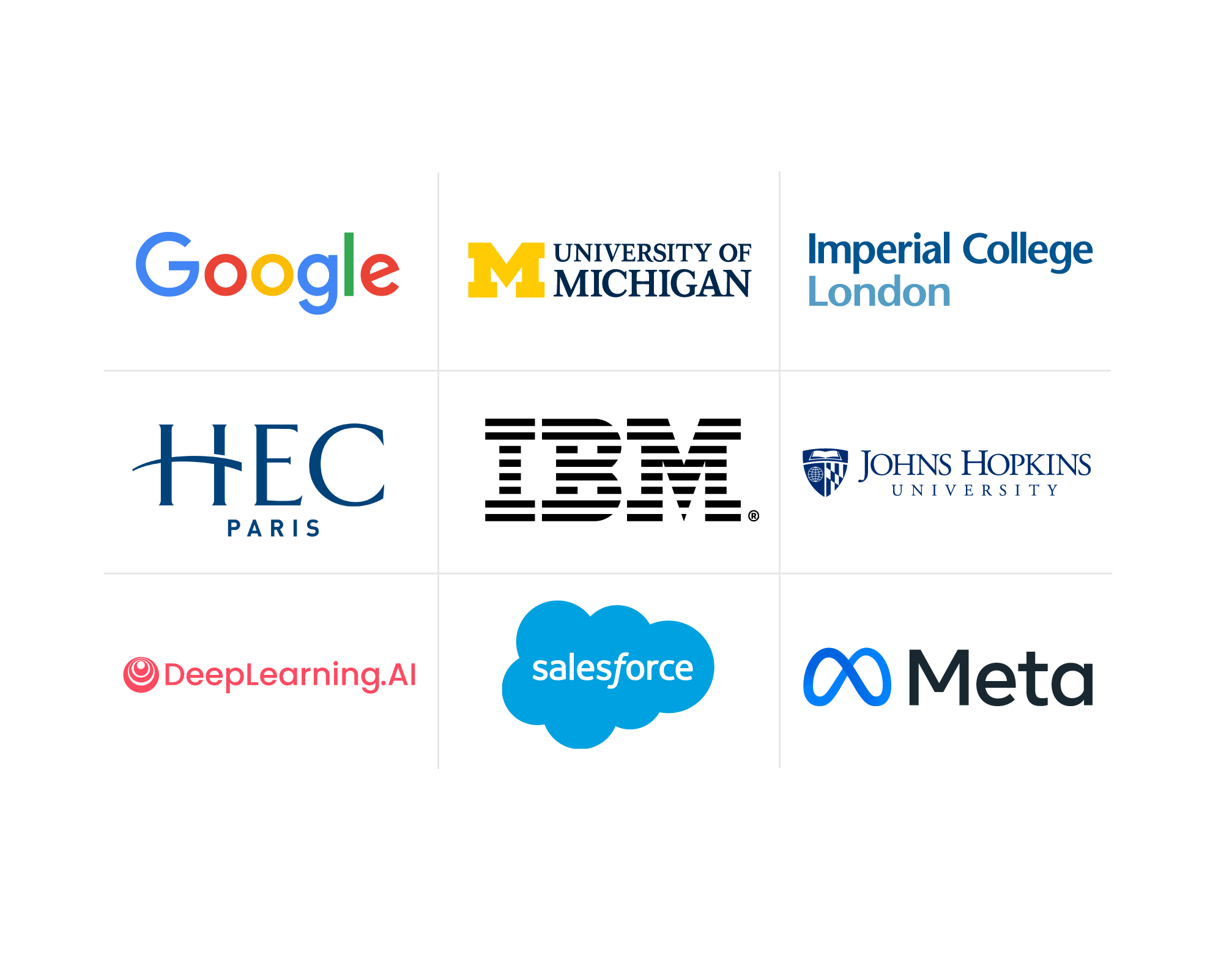Upskilling Strategy: Why You Need One for Your Workforce
Upskilling your workforce can take many forms, including bootcamps, educational partnerships, and free resources. Learn what an upskilling strategy is and why you need one.
![[Featured Image] A woman leads a training course to upskill employees.](https://d3njjcbhbojbot.cloudfront.net/api/utilities/v1/imageproxy/https://images.ctfassets.net/2pudprfttvy6/2fUxB7TSpt9ZEnAE5jHzqP/664619b947a2fbb15ab1b4a8f3f087f9/GettyImages-1358219358.jpg?w=1500&h=680&q=60&fit=fill&f=faces&fm=jpg&fl=progressive&auto=format%2Ccompress&dpr=1&w=1000)
By investing in an upskilling strategy, you can not only enhance productivity and performance in your organization but also show a commitment to your employees’ futures. In this article, we will explore what upskilling is, how an upskilling strategy can benefit you, and examples of upskilling strategies you can employ.
What is upskilling?
Upskilling is the process of providing opportunities for existing employees to learn new skills or enhance their current abilities. Businesses implement upskilling strategies to ensure their workforce stays relevant and competitive in an evolving market.
This approach emphasizes continuous learning and development, enabling employees to adapt to new technologies, methodologies, or roles within the company. A company invests in its existing talent through upskilling, enhancing employee satisfaction, and aligning the workforce’s skills with the organization’s goals and vision.

Upskilling vs. reskilling
Upskilling and reskilling represent two distinct concepts in workforce development.
Upskilling is about adding to or enhancing existing skills, allowing employees to grow within their current roles or prepare for new opportunities within the company. For example, upskilling helps a software developer learn new programming languages to expand their coding capabilities.
Reskilling, on the other hand, focuses on training employees in entirely new skill sets, enabling them to transition into different roles within the organization. This might be necessary if a certain job function becomes obsolete due to technological advancements, and the employees in that role need to move into a different area within the company. For example, a software engineer might use their experience to reskill to a different role as a project manager for their IT firm.
Benefits of upskilling your workforce
Investing in upskilling your workforce can lead to numerous short- and long-term benefits.
Maintaining a competitive edge
By continuously enhancing the skills of employees, companies ensure that they stay ahead of industry trends and innovations. This constant evolution helps maintain a competitive edge and drives the business forward.
Improving employee retention and satisfaction
Employees value opportunities for growth and development. Upskilling not only boosts their skill set but also raises job satisfaction and commitment.
Aligning with business goals
As organizational strategies and objectives shift, upskilling allows the workforce to evolve alongside the business. This alignment ensures employees are well-equipped to meet current and future organizational needs.
Filling skill gaps
The rapid pace of technological advancement, such as the rise of artificial intelligence, often leads to emerging skill gaps within a company. Upskilling provides a proactive approach to addressing these gaps, ensuring the workforce is adept and relevant.
Enhancing productivity
With the right skills, employees can perform their tasks more efficiently, which can enhance productivity.
Promoting a culture of continuous learning
By embracing upskilling, companies foster a culture of continuous learning and innovation. This environment encourages employees to seek new knowledge, take on challenges, and contribute more creatively to the organization’s success.
Attracting talent
A strong upskilling strategy signals to potential hires that the company invests in its employees’ growth and development. This commitment can make the organization more attractive to top talent in the job market.
Examples of companies that have invested in upskilling
Industry leaders recognize the importance and benefits of upskilling and launching initiatives to make this a priority in their business models. Some programs include:
Amazon: In September 2021, Amazon pledged $1.2 billion to offer 300,000 employees access to education and skills training programs through 2025 [1]. This initiative is part of Amazon’s Upskilling 2025 pledge, with programs designed to help employees build modern skills needed for higher-paying technical or non-technical roles within Amazon and overall.
JPMorgan Chase: In 2019, JPMorgan invested $350 million in the New Skills at Work program, which aims to provide skills training to workers in the financial sector [2]. The focus is on creating pathways to higher-paying, in-demand jobs within the company and industry.
Walmart: Walmart has implemented various upskilling initiatives through its Walmart Academies and programs. In 2022, Walmart launched its College2Career program, which provides a training program for recent college graduates to work with Walmart leaders and learn how to manage Walmart stores effectively [3]. Walmart also has programs to cover college tuition for its workforce.
Upskilling strategy examples
Upskilling strategies can vary widely depending on the organization's goals, size, and nature and the workforce itself. You can choose between several options for upskilling strategies.
Provide free resources
Providing free resources means offering employees access to learning materials, online courses, tutorials, and tools at no cost. This could include subscriptions to e-learning platforms, free guides, or access to industry conferences. By removing financial barriers, organizations enable more employees to pursue continuous learning and development on their own time. Free resources can empower individuals to learn at their own pace and choose subjects that align with their career goals and the company’s needs.
Give access to bootcamps
Bootcamps are intensive, short-term training programs designed to upskill participants in specific areas quickly. The bootcamps employees choose can represent the organization’s unique needs and goals—many bootcamps focus on tech skills based on how the current workforce is trending.
Partner with schools
Partnering with schools and universities can mean several things. In some cases, industries will cover tuition or have a tuition discount for workers at their partner schools. Other partnerships could involve codesigning curricula or offering internships. These partnerships can foster a strong connection between academia and industry, ensuring the training is relevant and aligned with current market demands. It also provides a potential talent pool for recruitment.
Train managers to be coaches
Training managers to act as coaches shifts the managerial role from a directive approach to a more supportive and developmental one. This involves equipping managers with the skills to mentor, guide, provide feedback, and facilitate learning within their teams. Coaching encourages a culture of continuous growth, promotes open communication, and fosters strong relationships between managers and their teams.
Upskill your workforce with Coursera
Upskilling is a valuable skill for people in many different career fields and stages. If you are interested in upskilling your management skills, consider programs on Coursera for Business, such as the Strategic Leadership and Management Specialization by the University of Illinois at Urbana-Champaign or the Professional Skills for the Workplace Specialization by the University of California, Davis.
Article sources
Amazon. "Our Upskilling 2025 Programs." Accessed November 3, 2023.
This content has been made available for informational purposes only. Learners are advised to conduct additional research to ensure that courses and other credentials pursued meet their personal, professional, and financial goals.

